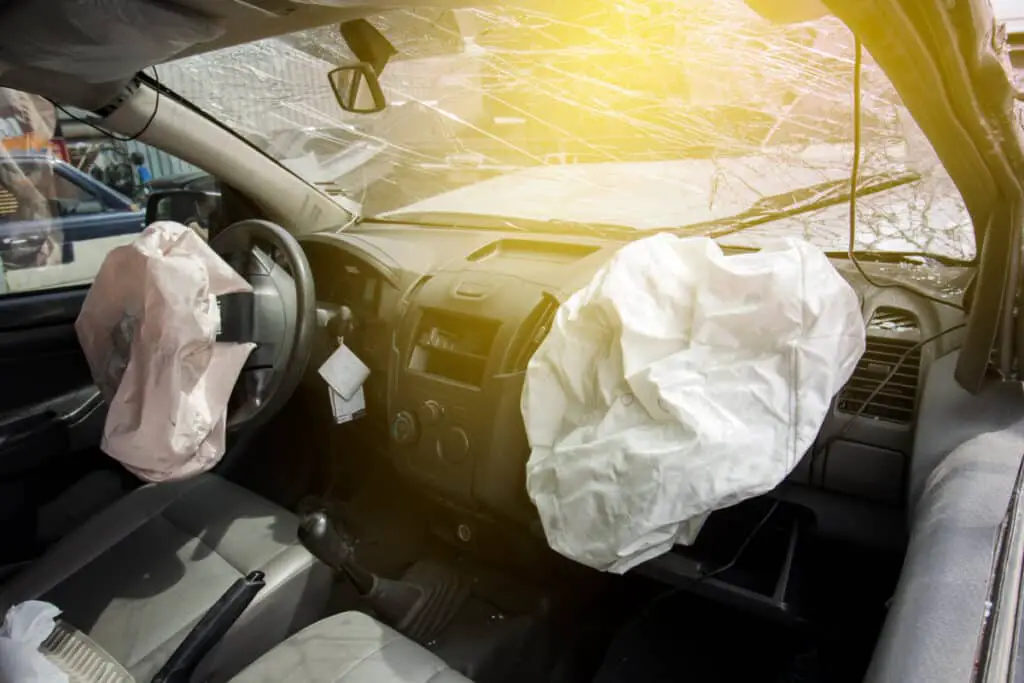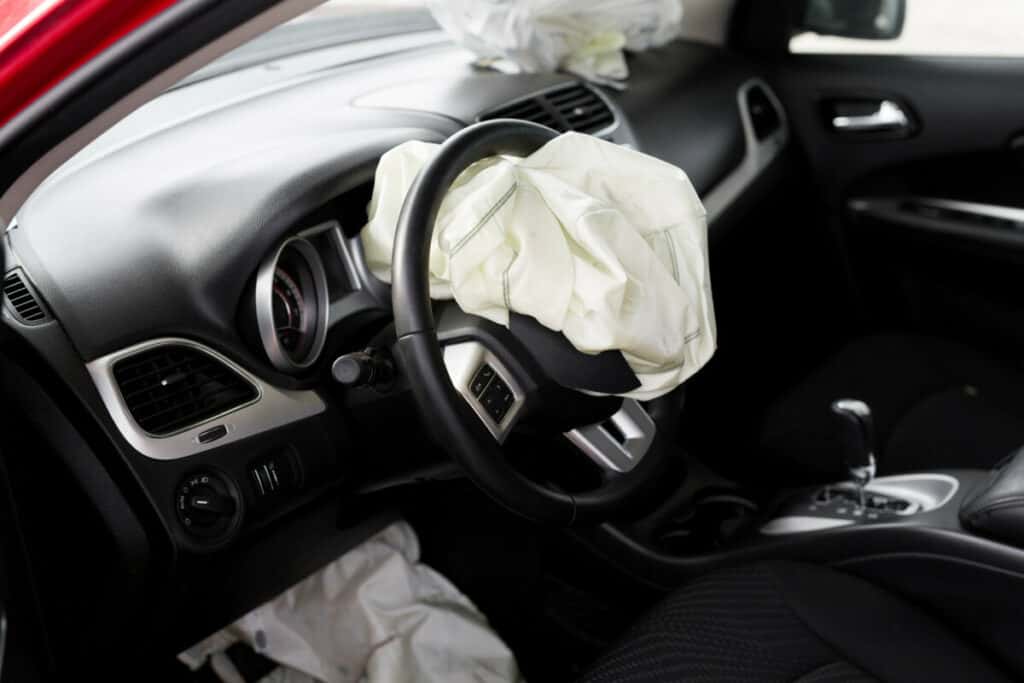
Airbags are not your everyday kitchen trash, there are specific government regulations on how to get rid of them that are important to follow. To find how to dispose of them safely, government sources were reviewed along with other hazardous material sites.
Airbags that go off in an accident should be disposed of by removing the airbag, recycling it, or upcycling the used airbag. If the airbag has yet to go off, and the car is going to get destroyed, the best option is to not remove the airbag and let it go off as they crush the car.
There are careful rules you must follow if you plan on disposing of your airbag. Below, we will go over the reasons and tips for properly disposing of an airbag.
Why You Should Dispose of an Airbag
There are several reasons why you should properly dispose of an airbag as opposed to having it remain in the car. These include personal safety, environmental protection, as well as regulatory reasoning. The main culprit for all these reasons is sodium azide.
Sodium azide is the chemical that allows the gas to kickstart the airbag to deploy when needed. If the gas was to escape the bag in an accident and to fill the confined space, that would create a very dangerous situation with the toxic gas being inhaled and coming in contact with skin. There is also a risk of the creation of hydrazoic acid when mixed with water which can lead to the contamination of groundwater. That groundwater then becomes hazardous waste and could potentially reach our own drinking water as well as the water we use in our toilets and showers, which is an even bigger issue.
With so many available and easily accessible options to properly dispose of an airbag, it is well worth the effort and time to do so in order to avoid all of these possible high-risk situations. Even just as important as disposing of the airbag is raising awareness of doing so and all the ways to accomplish that.
If people don’t know about it, they are less likely to do it. As you yourself become more educated, you can then spread the word and share your learnings with others and encourage them to do the same. The more people that are educated, the fewer airbags will be disposed of improperly.
How to Remove the Airbag

Before you can even consider what to do with your airbag you are going to have to remove it. This is a very delicate process if the airbag has not been deployed because with the wrong touch or static electricity it can unexpectedly deploy which is dangerous for you as the handler because they deploy at speeds ranging from 8-14 mph.
This whole process should take approximately 1 hour. Before you begin actually removing the airbags it is suggested that you utilize the emergency brake, disconnect your car battery’s negative cable, and let it sit for 5 minutes before doing anything. This cable should remain detached until the removal is complete. This is to prevent any short circuits or accidental deployment.
To begin, turn the ignition switch on to allow you to move the steering wheel to have better access. Turn the steering wheel 90 degrees and then find the access holes with bolts, some vehicles will have a slot that requires a screwdriver to access. Now loosen the bolts/clips to release a side of the airbag. Some bolts are held tightly in the wheel and can’t be removed. Once you get one side of the airbag out, turn the wheel 180 degrees and repeat the same process for the other side. Be careful to not be quick when removing the front of the wheel as it can damage another wiring.
Ways To Dispose
The options available to you are very dependent on the current situation and the state that your airbag(s) are in. If you have a defective airbag then a good alternative for you is the Rebuilders Automotive Supply program which processes and pays for defective Takata airbags. If your airbags have not been deployed and the car is going to be destroyed it is in your best interest to leave the airbags in their places and let them be crushed along with the car. Both the car and airbags will be disposed of in the same way which in that case is no longer your concern.
Recycling

Recycling your airbag is a great, environmentally friendly option because it redirects waste that would be added to landfills. Ultimately this opportunity is probably one of the best ones because it can help decrease both your and your dealership’s environmental footprint. Scrap Metal Recyclers made it possible for airbags to be recycled,
Upcycling
There are a surprising amount of things that can be created from upcycling airbags. Although there are many options for turning airbags into other useful items, it was incredibly difficult to find instructions for how you can do this yourself. Instead, I found that there are many companies that are focused on selling upcycled items.
An example of this is a factory in Chico, CA that receives leftover material from airbags from a recycling program in Salt Lake City, UT. This company hand-sews airbag material into totes and wallets and then sells them, something cool with this is that each article is unique. These can be found in the first link below.
Another company that upcycles airbags is Keen, this is a large company primarily known for its shoes. They came out with a line of products called Keen’s Harvest series which turns airbags into a variety of other items. These include backpacks, messenger bags, wallets, and totes. This company also receives its airbags from a Salt Lake City recycler and produces its products in a factory in California.
Disposal Regulations
When disposing of airbags there are certain regulations to do so; starting with the packaging that you put the airbag in. A steel drum with a wall and lid thickness of equal to or greater than 20 gauge is required with the lid being securely locked while still providing ventilation in case of a fire. This packaging requirement is because airbags are flammable, it is also necessary to correctly label the package as “Airbag Waste-Do Not Reuse”.
If you are unsure if the packaging you are using meets regulations check the first and second sources below and if those are not sufficient you can contact the DOT’s Hazardous Materials Information Center.
Related Topics:
If you like the article above, here are some other similar articles you should check out!
